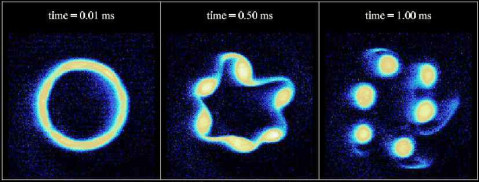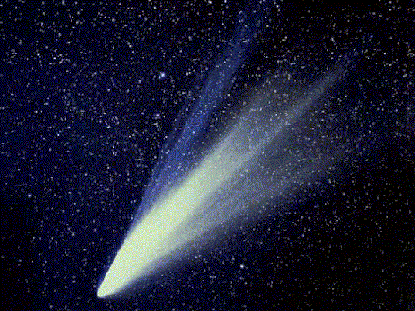I think that the closed system of the experiment does not apply to the open system of Saturn's atmosphere.
The experiment consists of a stationary cylindrical container in which a circular plate is
rotated by a motor.
When the plate is set into rotation the centrifugal force presses the fluid outward, deforming the free surface.
So the fluid is trapped in the cylinder and centrifugal force causes the fluid to pile up along the edges forming a depression in the middle resulting in a concave three dimensional structure. I think the polygonal shapes are the result of constructive interference waves generated by the vibrating disc. The side views show a pronounced cup shape like water going down a drain so the structure is three dimensional and not just a pattern on the surface.
They used two different fluids, water and ethylene glycol.
Aside from water, the experiments have been carried out with ethylene glycol with a viscosity of around
15 times larger than water...
We do not see polygons with N > 3 in ethylene glycol. For most polygons with N > 2, the center is dry.
In our experiment a shear layer indeed exists due to the no-slip condition on the stationary cylinder wall and could indeed lead to instability of the classical Kelvin-Helmholtz/Rayleigh type. In some cases we actually observe vortices close to the corners of the polygons. This is shown very clearly in Fig. 2(right), where vortices are seen outside each of the four corners. We therefore believe that vortex formation and interaction is very important for the development and stability of the final state.
A couple of things about the Saturn hexagon stand out compared to this experiment. For one Saturn's atmosphere is an open system. Another is the fact that the atmosphere within the hexagon is not deeply concaved, yet the structure/shape of the outer walls extends 60 miles deep into the atmosphere and doesn't appear to have the associated vortices at the corners either.
Admittedly the experiment, when viewed two dimensionally from above, does have superficial similarities to Saturns hexagon, but not so much when considering all of the details as a whole.
cheers,
Tim


